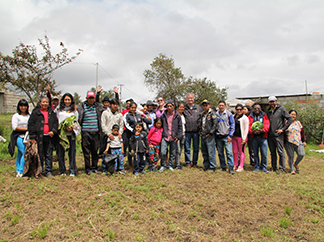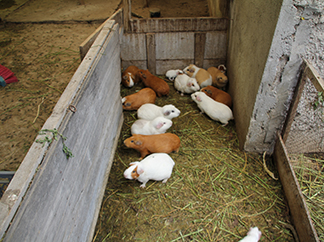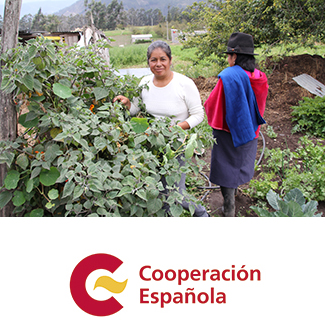consent_cookie
Duración: 1 year
Stores the user's cookie consent state
18-03-2019
The municipality of Quisapincha, in Ecuador, is the scene of an exciting project that will improve the living conditions of their community. It consists of organizing and optimizing the production of cuys, a rodent appreciated in the Andean areas for its meat. This development program is funded by the Spanish Agency for International Development Cooperation (AECID).
The project, which lasts two years, is born from the hand of the local partner of the Foundation, Humana Ecuador, with the support of the AECID and the resources obtained with the management of the textile. With an investment of 383,000 euros and an official start date of March 15, it will directly involve 250 people and a positive effect on the local economy as a whole.
The main objective of the project is to organize and optimize the production of cuys, a very popular animal in the Andean region of Latin America and better known in our country as "guinea pigs" or "guinea pigs". The program aims to consolidate a cooperative with 250 farmers for the production of the animal, its storage and subsequent sale. The initiative includes the cultivation of grass fields adapted to the diet of the rodent.
In Ecuador, Bolivia, Colombia or Peru, guinea pig meat (onomatopoeic name of Quechua quwi) is highly valued because it has a high nutritional value thanks to its low fat and high protein content.
"This three-way initiative is a nice challenge for our organization," says Rafael Mas, Project Manager Humana Fundación Pueblo para Pueblo "we are going to invest our experience in improving the living conditions of this indigenous community, especially those of women. "
The objectives imposed by the project
The main objective is to organize and optimize the production and marketing of the animal, although the program will also prioritize the creation of cooperative enterprises (with the construction of a space to administer and store the cuys and the implementation of business plans); they will be supported to participate in trade fairs and in the search for new markets. Emphasis will also be placed on the development of leadership skills and workshops on social and cultural rights for women will be held.
Located at 3,000 meters altitude, the municipality of Quisapincha is known for the production and marketing of leather goods such as sweaters, wallets, boots, hats and gloves. The term Quisapincha comes from the Quichua words "Quimsa" and "Punlla", meaning "three" and "days", respectively; that was the time it took to get from there to Quito or vice versa.
The involvement of the AECID since 1996
Rafael Mas is also satisfied with the involvement of AECID in a new community development project promoted by the Foundation and our local partners. The collaboration between the Agency and Pueblo for People Foundation goes back to 1996. These are some of the most outstanding initiatives implemented for more than two decades, mainly in the fields of education and agriculture:


